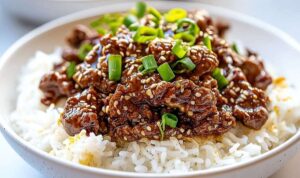Korean Ground Beef Bowls are my go-to solution when I need a quick, satisfying dinner that doesn’t compromise on flavor. This 30-minute meal combines tender grass-fed beef with a savory Korean-inspired sauce that transforms simple ingredients into something truly special.
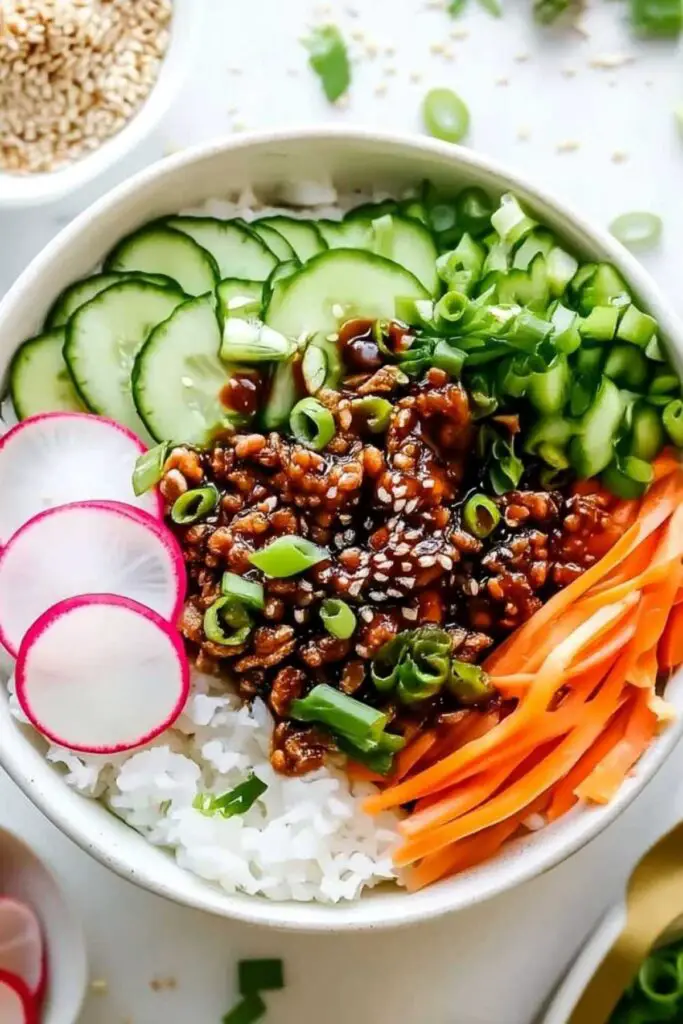
Last Tuesday, I had one of those evenings where everyone was hungry, but I barely had time to think about dinner. That’s when I remembered this recipe that my neighbor shared with me after we both raved about a similar dish at our local Korean restaurant. The beauty of these Korean Ground Beef Bowls lies in their simplicity—you probably have most of the ingredients in your pantry right now. The combination of coconut aminos, sesame oil, and just a touch of honey creates a sauce that’s both umami-rich and slightly sweet, coating every bite of beef with incredible flavor. This 30-minute meal combines tender grass-fed beef with a savory Korean-inspired sauce that transforms simple ingredients into something truly special, much like our Mongolian Noodles with Ground Beef that also showcases how Asian flavors can elevate humble ingredients.
Why You’ll Love This Korean Ground Beef Bowls Recipe
I’ve been making variations of Korean ground beef bowls for years, and this particular recipe has become a family favorite because it strikes the perfect balance between authentic flavors and everyday convenience. The inspiration came from my love of Korean cuisine and my need for meals that work for busy families without sacrificing taste.
- Ready in just 30 minutes from start to finish
- Perfect for busy weeknights when you want something special
- Flavor explosion in every bite with the perfect sweet and savory balance
- Easily adaptable to different spice preferences and dietary needs
- Healthy choice featuring grass-fed beef and fresh vegetables
- One-skillet meal that minimizes cleanup, similar to our popular Steak and Shrimp Stir Fry that also delivers maximum flavor with minimal dishes
- Great for meal prep and makes delicious leftovers
This Korean ground beef bowl recipe is more than just a quick dinner—it’s become our family’s way to bring a little adventure to our weeknight table without the stress of complicated cooking.
Ingredient Note List
Grass-Fed Angus Ground Beef: I always recommend using high-quality grass-fed beef because it has better flavor and texture, plus it browns beautifully without releasing excess fat into the pan.
Coconut Aminos: This naturally sweet and salty sauce is my secret weapon for creating that authentic Korean flavor without gluten, and it adds the perfect umami depth to the beef—it’s also fantastic in our Chicken Marinade for anyone looking to explore more Asian-inspired flavors.
Toasted Sesame Oil: Just a tablespoon of this aromatic oil transforms the entire dish with its nutty, rich flavor that’s essential to Korean cooking.
Honey: A touch of honey balances the saltiness of the coconut aminos and helps create that glossy, caramelized coating on the beef.
Rice Vinegar: This mild acid brightens the whole sauce and prevents it from being too heavy or one-dimensional.
Fresh Garlic: I always use fresh minced garlic rather than powder because it gives the Korean ground beef bowls a more vibrant, pungent flavor that mellows beautifully as it cooks.
Crushed Red Pepper Flakes: These add just the right amount of heat, and I love that you can easily adjust them based on your family’s spice tolerance.
Green Onions: Both the white and green parts serve different purposes—the whites cook into the sauce while the greens provide a fresh, sharp finish.
Fresh Vegetables: The cucumber, radishes, and carrots provide essential crunch and freshness that balances the rich, savory beef perfectly.
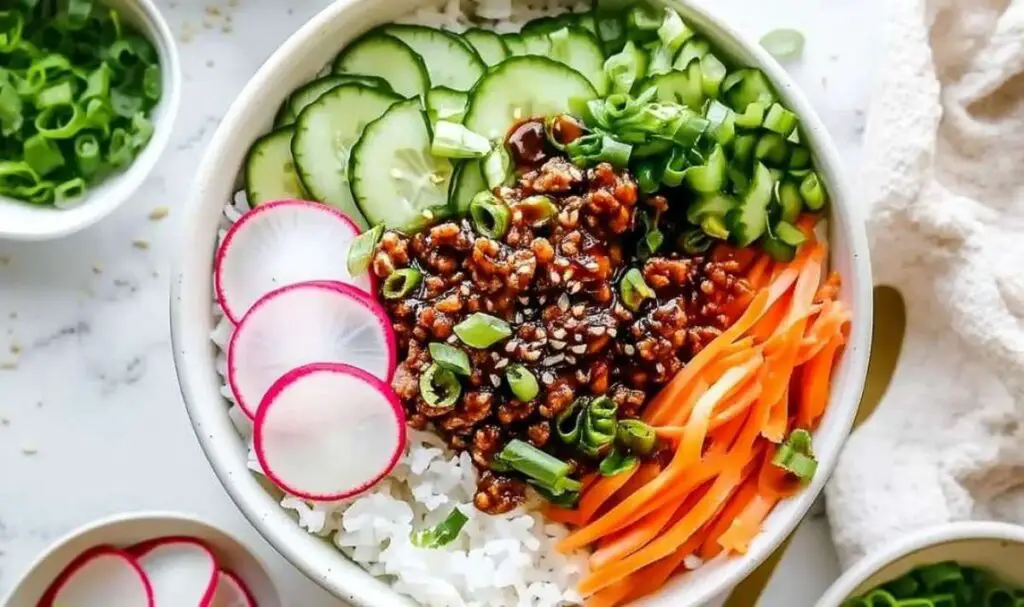
How to Cook Korean Ground Beef Bowls
Step 1. I usually start by placing my large skillet over medium-high heat and letting it get properly hot before adding the beef—this ensures better browning and prevents sticking.
Step 2. Add the ground beef to the hot skillet and immediately start breaking it up with a wooden spoon into small, even pieces—I’ve found this gives the best texture for Korean ground beef bowls.
Step 3. Cook the beef for about 6-8 minutes, stirring frequently, until it’s completely browned and cooked through, then drain any excess fat and return the skillet to heat.
Step 4. While the beef cooks, I always prepare my sauce by whisking together the coconut aminos, honey, sesame oil, rice vinegar, minced garlic, red pepper flakes, and ginger in a small bowl until smooth.
Step 5. Pour the prepared sauce over the cooked beef along with the light green parts of the sliced green onions, and stir everything together well.
Step 6. Let the mixture simmer for 1-2 minutes until the sauce is slightly bubbling and the flavors have melded—this step is crucial for the best taste.
Step 7. Remove the skillet from heat and prepare to serve your Korean ground beef bowls over hot cooked rice, topped with the remaining green onion parts and sesame seeds.
Step 8. I like to arrange the fresh vegetables on a separate platter so everyone can customize their bowl with the vegetables they prefer.
How to Store & Reheat
I usually store any leftover Korean ground beef in an airtight container in the refrigerator, where it stays fresh and flavorful for up to 3 days. Make sure the beef mixture cools completely before refrigerating to maintain the best texture.
In my experience, this dish freezes beautifully if you want to make it ahead—I portion the cooked beef mixture into freezer-safe containers and freeze for up to 3 months. Just remember to thaw it overnight in the refrigerator before reheating.
For best results, I recommend reheating the beef mixture in a skillet over medium heat with a splash of water or extra coconut aminos if the sauce has thickened. You can also use the microwave for convenience—just cover it with a damp paper towel and heat in 30-second intervals until warmed through. Always prepare fresh rice and vegetables when serving reheated Korean ground beef bowls for the best taste and texture—or try serving it over our Teriyaki Shrimp Stir Fry vegetables for a delicious fusion twist.
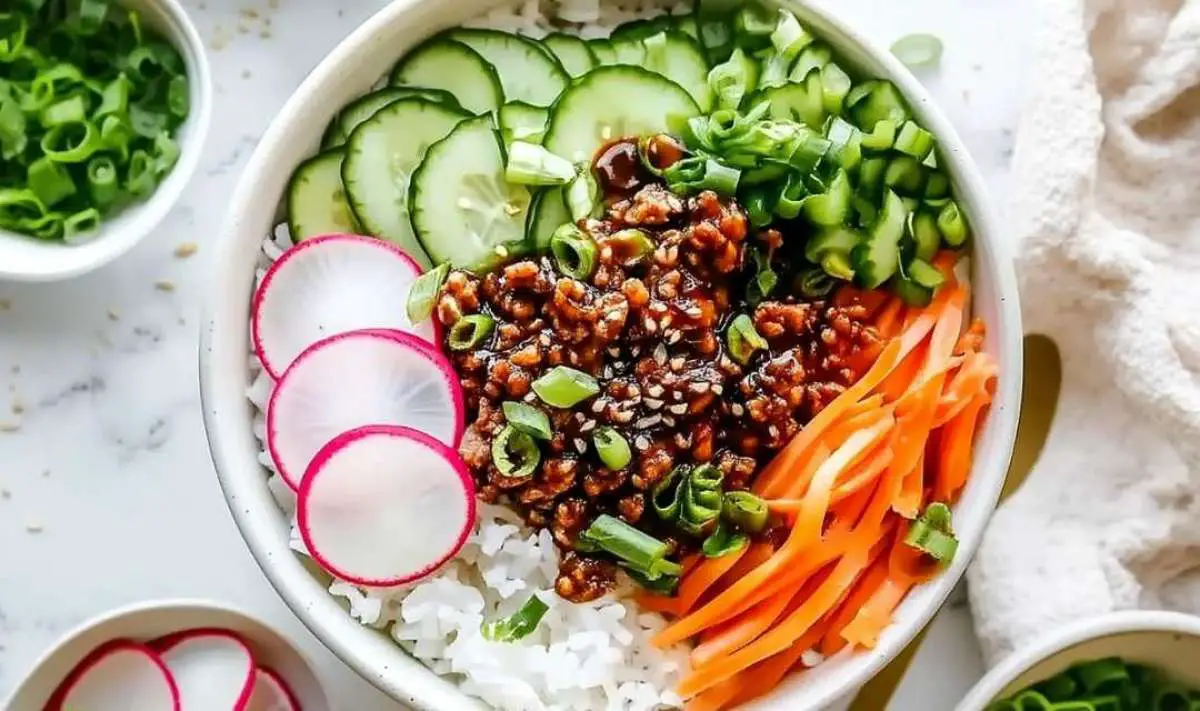
Korean Ground Beef Bowls
Ingredients
Equipment
Method
- Heat a large skillet over medium-high heat. Add ground beef and cook 6–8 minutes, crumbling with a wooden spoon until browned. Drain fat.
- Return skillet to heat. Pour in sauce and light green/white parts of green onions. Stir and cook 1–2 minutes until beef is coated and sauce simmers.
- Divide rice into bowls. Top with beef, cucumber, radishes, and carrots.
- Garnish with sesame seeds and green onion tops. Add Sriracha or chili sauce if desired.
Notes
What to Serve With Korean Ground Beef Bowls
Din Tai Fung Cucumber Salad: This crisp, refreshing cucumber salad provides the perfect cooling contrast to the warm, savory beef while adding authentic Asian flavors that complement the Korean seasonings beautifully.
Chicken Salad Chick Grape Salad: The sweet grapes and creamy texture of this salad create a delightful balance against the savory umami flavors in the Korean ground beef bowls.
Master’s Egg Salad: This protein-rich side adds extra substance to your meal while the creamy texture contrasts nicely with the fresh vegetables in the bowl.
Hidden Valley Ranch Dip: Perfect for dipping your fresh vegetables, this classic American dip bridges the flavor gap between Korean spices and familiar comfort food tastes.
Roasted Veggie Chickpea Bowls: These protein-packed bowls make an excellent vegetarian companion dish, adding extra fiber and nutrients to create a complete, balanced meal.
Steamed Broccoli: Simple steamed broccoli adds nutritional balance and a pop of green color to your plate while letting the Korean flavors shine through.
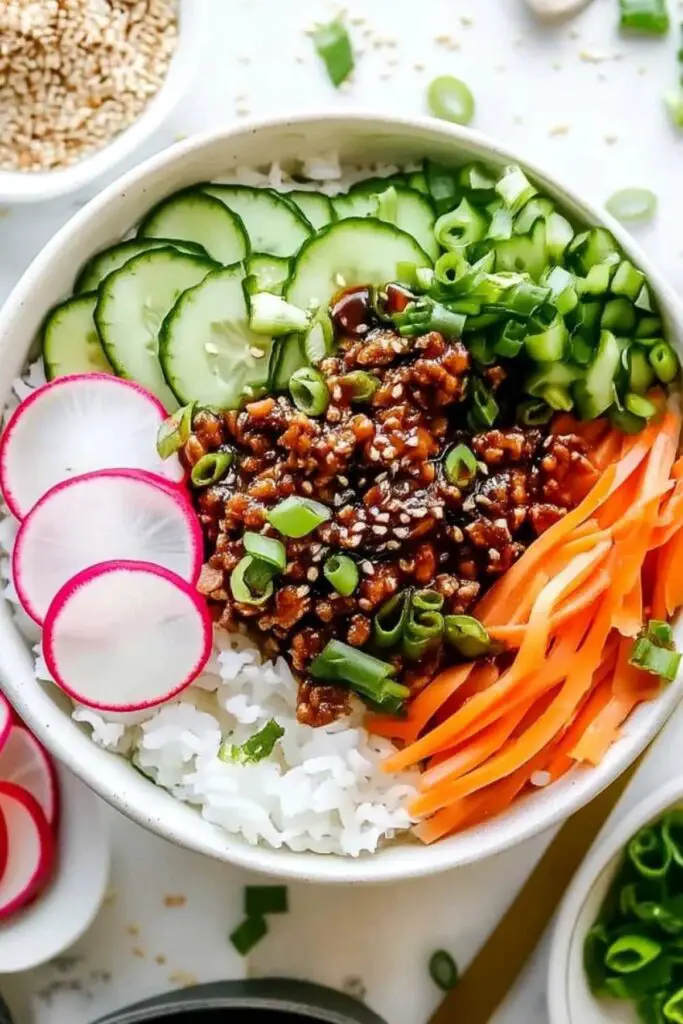
FAQs
How many calories are in Korean Ground Beef Bowls?
Each serving of these Korean ground beef bowls contains approximately 460 calories, making them a satisfying yet reasonable option for dinner that fits well into most daily meal plans.
Are Korean Ground Beef Bowls healthy for you?
Yes, I consider these bowls quite healthy since they provide 26 grams of protein per serving from grass-fed beef, plus fiber and nutrients from the fresh vegetables and rice for a well-balanced meal.
Can I substitute the coconut aminos in this recipe?
Absolutely—you can replace the coconut aminos with 3 tablespoons of tamari or low-sodium soy sauce mixed with 3 tablespoons of water, though the flavor will be slightly different.


